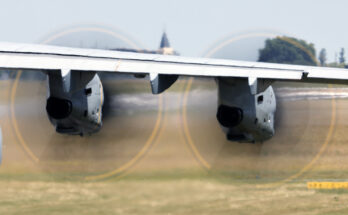
Critical counter-IED technology is included in a major U.S. arms sale proposed by NATO ally Poland. The government of Poland last week requested to buy 250 M1A2 SEPv3 Abrams main battle tanks and an equal number of VLQ-12 CREW Duke counter-IED systems, along with myriad other military vehicles, weaponry, and support equipment. The total estimated program cost is $6 billion.
Counter Radio-Controlled Improvised Explosive Device (RCIED) Electronic Warfare (CREW) jammers typically equip a number of vehicles in a convoy, creating an electronic “bubble” that prevents IEDs from being detonated via radio waves.
Counter-IED system production continues to be a high priority for the U.S. armed forces. In February 2021, Northrop Grumman received a $329 million JCREW contract for dismounted systems, mounted systems, mounted auxiliary kits, operational-level spares, depot-level spares, and engineering support services.
Additional defense electronic systems included in the recent arms sale request by Poland include Common Remotely Operated Weapons Station Low Profile (CROWS-LP) systems; communications equipment; GPS receivers; ammunition; spare and repair parts; special tools and test equipment (STTE); and related elements of logistics and program support.
The U.S. State Department’s Defense Security Cooperation Agency delivered the required certification notifying Congress of the action on February 17.
Forecast International’s eight Military Electronic Systems Market Intelligence Services cover the full range of defense-related systems and programs in the radar, communications, electro-optical, and electronic warfare markets, presenting a comprehensive market outlook for current equipment as well as new systems being developed as the modern battlefield moves toward a technology-based warfare approach with network-centric capabilities. An annual subscription includes numerous individual reports, most with a 10-year unit production forecast. Click here to learn more.
Andrew Dardine is lead analyst for Forecast International's Defense Electronic Systems group. He is the primary author of Forecast International's Electronic Warfare Forecast and co-author of Electro-Optical Systems Forecast and C4I Forecast. Andrew is also a regular contributor to FI's Defense & Security Monitor blog, offering insights into developing technologies such as directed-energy and next-generation jamming systems. His analysis of such vital market areas as EO/IR systems and electronic countermeasures technology has been cited in Defense News, Aerospace Daily, and Bloomberg Businessweek, among other news media. He has also written about the electronic defense market for Aviation Week and the Journal of Electronic Defense.




